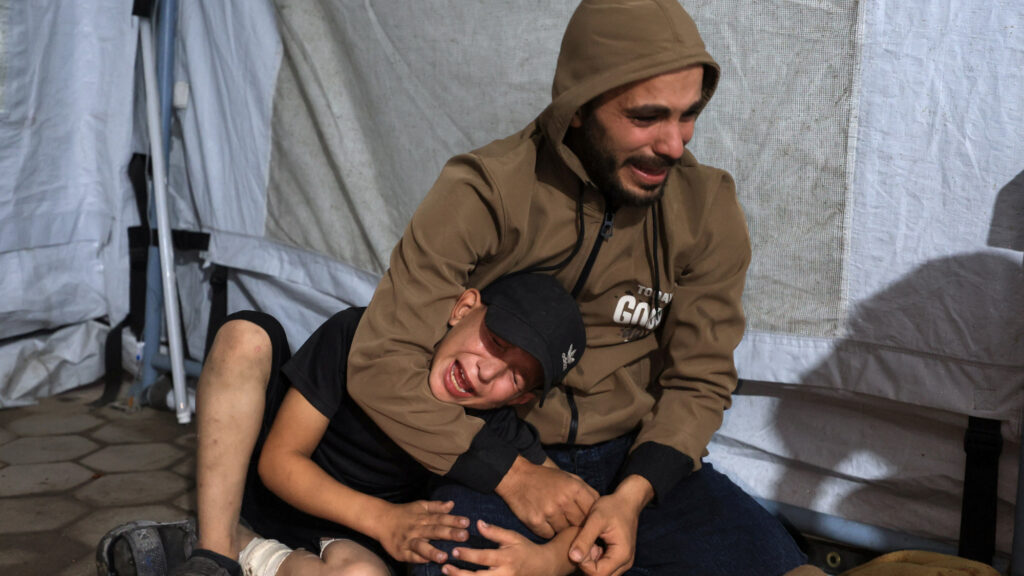Israeli air strikes pummelled the besieged Gaza Strip on Wednesday, killing at least 33 Palestinians, including 20 women and children, less than 48 hours after the UN Security Council adopted US President Donald Trump’s 20-point plan for the enclave.
Israeli fighter jets bombed tents sheltering displaced Palestinians in southern Gaza’s Khan Younis, as well as homes in Gaza City, with more than 70 people reported wounded.
Shelling and air strikes were also reported on Thursday morning, with most of the casualties reported in Khan Younis, local media reported.
The Palestinian group Hamas condemned the latest “massacre” and described it as “a dangerous escalation through which [Israeli Prime Minister Benjamin] Netanyahu seeks to resume the genocide.”
The Israeli military said it launched the strikes after its troops came under fire in Khan Younis earlier on Wednesday.
New MEE newsletter: Jerusalem Dispatch
Sign up to get the latest insights and analysis on
Israel-Palestine, alongside Turkey Unpacked and other MEE newsletters
However, there were no reports of injuries among Israeli soldiers, and no Palestinian groups have claimed responsibility for any attacks.
There were no reports of such clashes by local media, and the Israeli military provided no evidence to back its claims.
Hamas accused Israel of using the allegations to “justify its crimes”.
Since the ceasefire in Gaza came into effect on 11 October, Israel has regularly violated many of its provisions.
Deadly attacks have occurred almost daily, killing more than 312 people and wounding over 700.
Since the genocide began in October 2023, Israel has killed nearly 70,000 people and wounded 170,000 more, with at least 10,000 more missing. At least 80 percent of those killed were civilians, according to the army’s leaked data.
Gaza’s government media office has recorded around 400 ceasefire violations by Israel since 11 October.

‘Genocide stopped only in media’: Gaza endures daily bombings a month into truce
Read More »
These include 113 incidents of direct gunfire targeting civilians, homes, residential neighbourhoods, and tents of displaced people.
There were also 174 cases of aerial and artillery shelling.
Military vehicles carried out at least 17 incursions into residential and agricultural areas, crossing the temporary “Yellow Line”.
Israeli forces also carried out 85 demolitions of homes and civilian structures.
At least 35 people were also arbitrarily arrested.
Israel has also breached the ceasefire by maintaining a ban on most essential items and allowing an average of only 150 aid trucks into the Strip each day, despite the agreed 600 trucks daily.
It has also kept the Rafah crossing closed, trapping tens of thousands of wounded people and preventing them from receiving treatment abroad.
The latest attack came two days after the UN Security Council adopted a US-drafted resolution that reaffirmed its endorsement for the implementation and maintenance of the ceasefire.
It also authorised a Trump-led transitional authority to temporarily govern Gaza and to deploy international forces mandated with “demilitarising” the war-torn Strip and rebuilding it.
The resolution has been rejected by many Palestinians and legal experts for introducing a new foreign “trusteeship” over Gaza, which many critics have described as a new form of colonialism.

